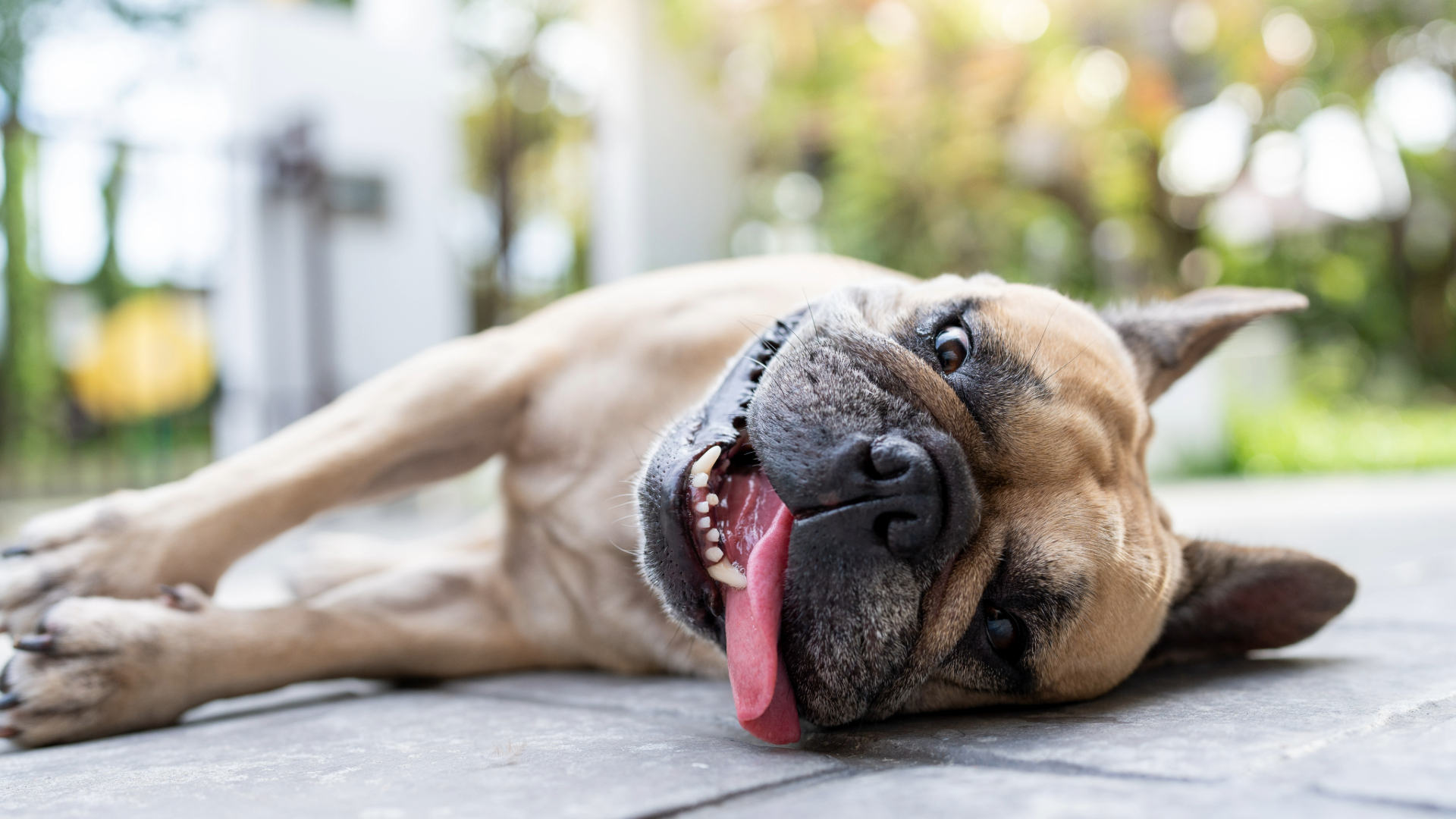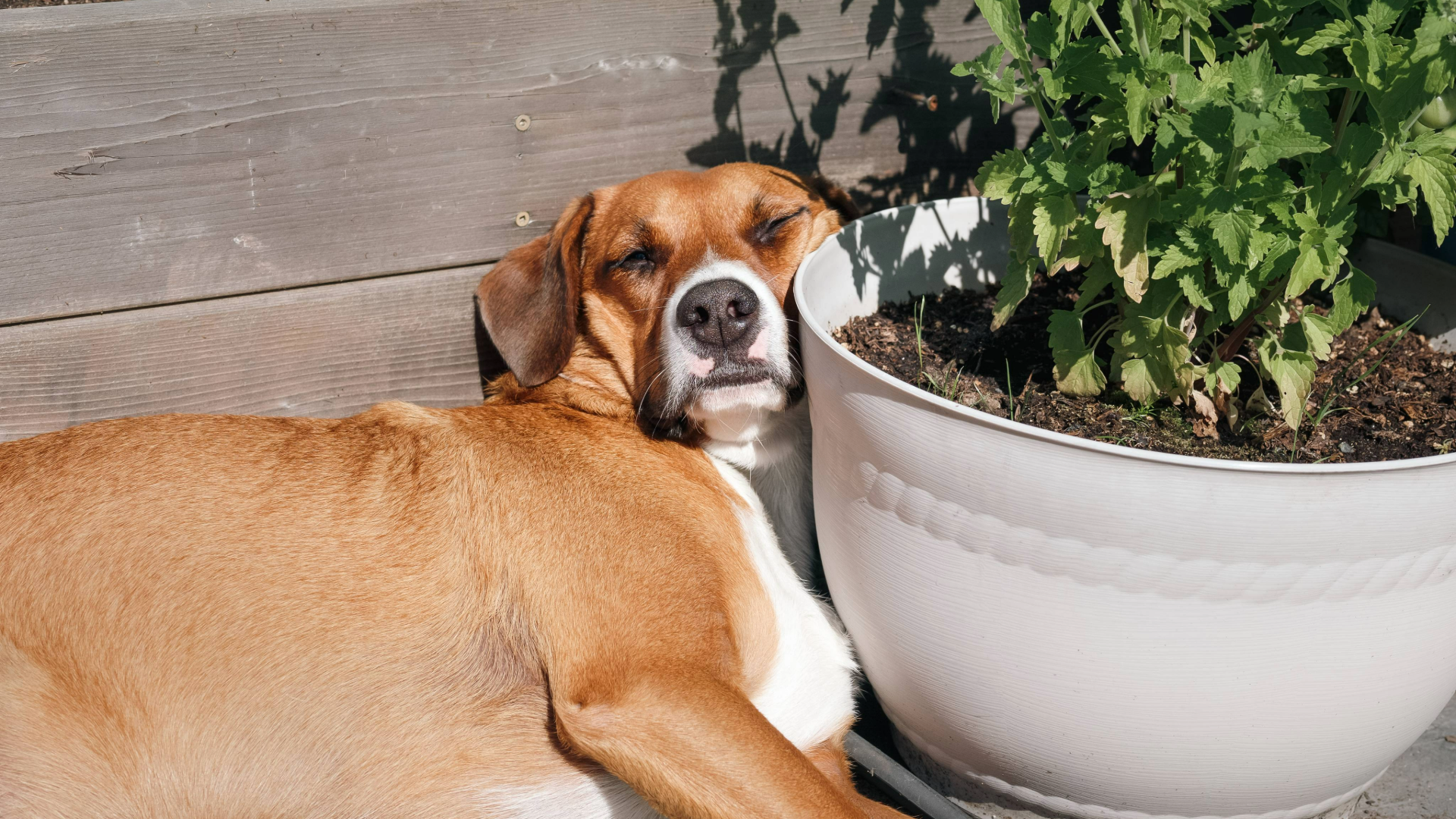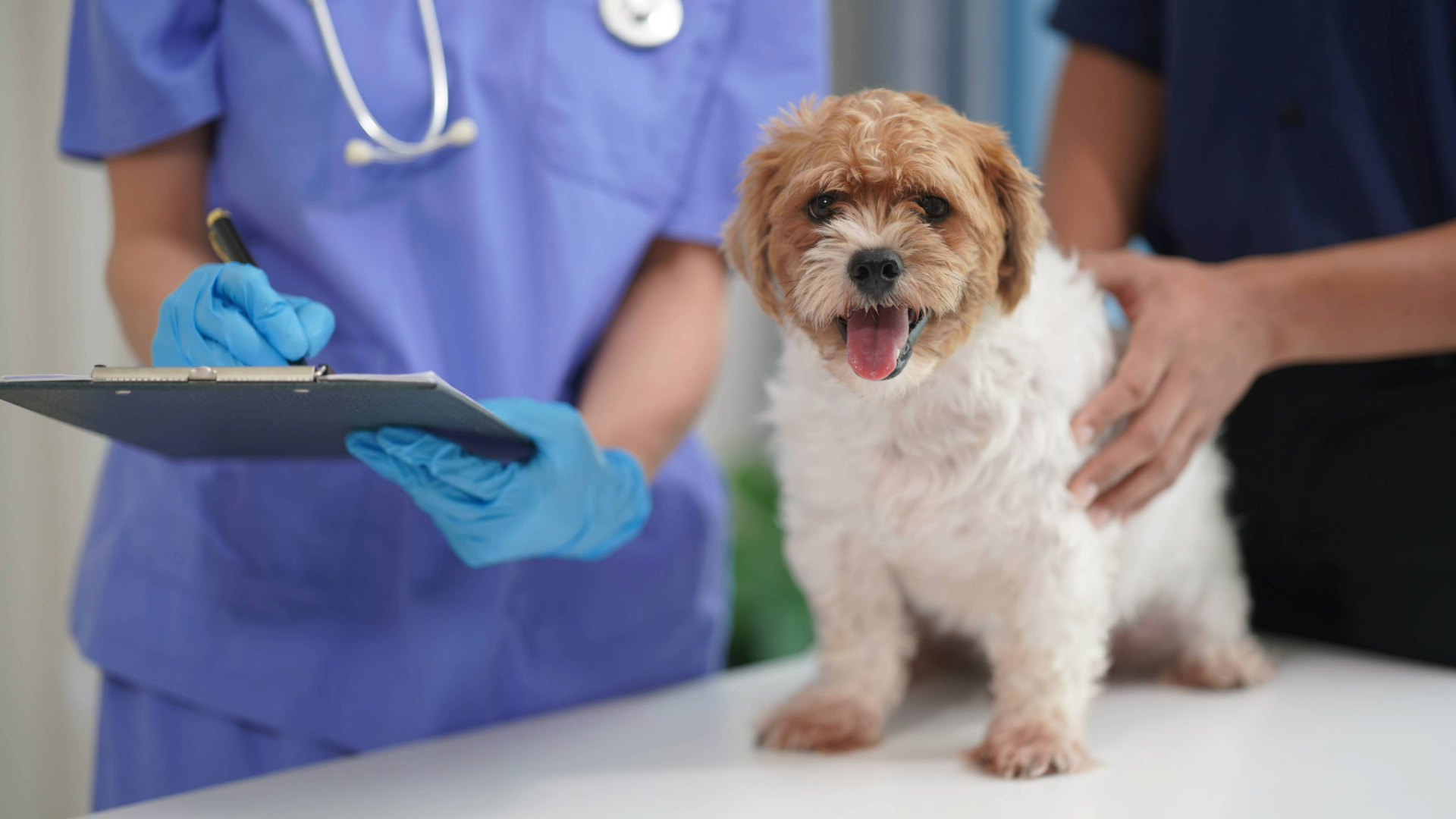
Dog heatstroke is a serious matter that can cause organ failure, internal bleeding, seizures, and even death. Your dog’s body is designed to work at a certain temperature, and if it reaches 104–106°F (40–41°C), it can wreak havoc on their body systems, so it's crucial to know how to cool down a dog in the summer.
A recent study in the UK showed that nearly 75% of heatstroke cases were in dogs who had been exercising, and nearly 13% were from environmental heat – the remaining 5% were dogs trapped in hot cars.
Below, Dr Joanna Woodnutt explains what dog heatstroke is, the signs to look out for, and how you can help prevent it. She has been a vet for nine years and has experience treating dogs with heatstroke – you'll find all her expert advice below:
What is dog heatstroke?
Also commonly referred to as heat exhaustion or overheating, dog heatstroke generally occurs when their body temperature rises to 104°F or above. Dogs have very little sweat glands, so they struggle to regulate their temperature during periods of extreme heat.
Their way of losing heat is through panting. However, if you have noticed that this becomes excessive, you need to look out for the signs of heatstroke in dogs, which could indicate that something more sinister is going on.

Signs of dog heatstroke
I’ve split these signs of dog heatstroke into early signs (cool your dog down and monitor them at home) and later signs (which are an emergency, meaning you have to get them to a vet).
Hopefully, this will help you decide whether your dog has heatstroke and what to do next:
Signs your dog is too hot
- Panting
- Seeking the shade
- Increased thirst
⚠️How to help: You should help them cool off by reducing the temperature of their environment.
Signs your dog has heatstroke
- Panting heavily
- Drooling heavily
- Seeming weak or lethargic
- Having blue, red, or purple gums that feel sticky to the touch
- Vomiting or having diarrhea
- Seeming confused or wobbly
- Shaking or having seizures
- Coughing or wheezing
⚠️How to help: If you notice these signs in your dog, you should get them wet (douse them with cool tap water) and take them to a vet. Put them in a cool and shady spot, use your car air conditioning to blow cold air at them, and make sure you call the vets to let them know you are on your way. Never put a damp towel over a dog.

How to prevent overheating in dogs
The best ways to prevent overheating in dogs include:
1. Make sure they are a healthy weight
Obesity increases the risk for overheating, so making sure your dog is the right weight before summer starts is best! Here's what to do if your dog is overweight.
2. Shave them
If your dog has a thick double coat, shaving some of their fur can allow them to shed heat more easily.
3. Don’t exercise them in hot weather
More dogs die from being exercised in hot weather than anything else – walk early or skip walks on hot days, replacing them with mental stimulation indoors. In a heatwave, consider booking hydrotherapy to keep your dog fit and cool. Here’s some more info about when it’s too hot to walk a dog.
4. Don’t leave them in hot cars, sunny rooms, or hot yards
Never leave your dog unattended if the temperature is – or could get – above 70°F.
5. Make sure they have plenty of access to water
Give them access to water bowls, pet water fountains, hoses, sprinklers, and dog paddling pools – water is brilliant for preventing overheating in dogs.
Which dogs are prone to overheating?
All dogs can overheat, but some dogs are more prone to overheating than others. These include:
- Brachycephalic breeds (those with short snouts), such as pugs or French Bulldogs
- Dogs with dark fur (who warm up faster in the sun)
- Breeds with thick coats bred for cold climates, such as Huskies or Samoyeds
- Dogs who are overweight or who have heart disease, especially if on certain medications
- Old dogs, young puppies
- Young adult males (who are more likely to over-exercise in the heat)
- Larger dog breeds

How is dog heatstroke treated by vets?
Here's what will happen once you arrive at the vet's, according to Dr. Rebecca MacMillan:
- The vet will try to cool them down by continually wetting their coat, using an electric fan, and starting intravenous fluids
- They may administer medication if the dog is showing severe signs, like seizures
- If your dog is struggling to breathe, they may be supplemented with oxygen
- The vet will take blood and urine samples to check for abnormalities
- Your dog may be given an ECG to check for any cardiac (heart) arrhythmia
She adds: "Dogs suffering from heatstroke will need hospitalisation for close supervision and regular checks until they have fully recovered. Repeat samples may be taken during this time to monitor for changes in their organ function or their ability to form blood clots effectively.
"Sadly, some dogs will die despite everyone’s best efforts. Euthanasia may be advised as the kindest option in some severe cases. Preventing heatstroke from happening in the first place is the most important thing that owners can do for their pets."
Dogs cannot sweat, so they pant to cool off. The problem is, panting isn’t always efficient enough. Keeping your dog cool in the summer is therefore essential to prevent heatstroke.
Found this helpful? You might also be wondering whether it's safe to let your dog sunbathe and if dogs need sunscreen
Edited by Megan Milstead.







